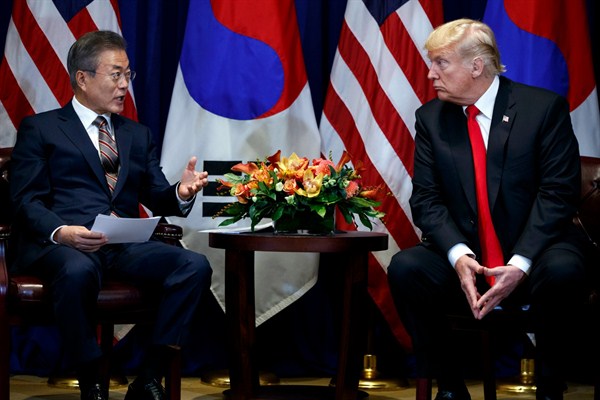As 2018 draws to a close, U.S. President Donald Trump and his South Korean counterpart, Moon Jae-in, are sounding remarkably optimistic about the future of the Korean Peninsula, a marked contrast to the hostile rhetoric of potential “fire and fury” that reflected heightened tensions following a series of nuclear and missile tests by North Korea just one year ago. Most experts and analysts, however, are skeptical that the current approach will yield the positive outcomes the two leaders predict, noting that no concrete actions toward denuclearization, much less the process by which they might be taken, have been discussed with North Korea.
Just last week, returning from Argentina where he met Trump on the sidelines of the Group of 20 summit, Moon stated that Trump had a “very friendly view” of North Korean leader Kim Jong Un. He added that the U.S. would grant Kim’s wishes of security guarantees and relief from international sanctions, as agreed to during their summit in Singapore in June earlier this year.
Yet, notably, Kim has remained silent since Sept. 19, when he met for the third time with Moon and the two leaders issued the significant “Pyongyang Declaration.” It was the first agreement with North Korea that has offered any tangible proposals for potential cooperation in concrete language, rather than vague and abstract terms, although this cooperation remain centered on inter-Korean and peninsular affairs, as opposed to denuclearization.

